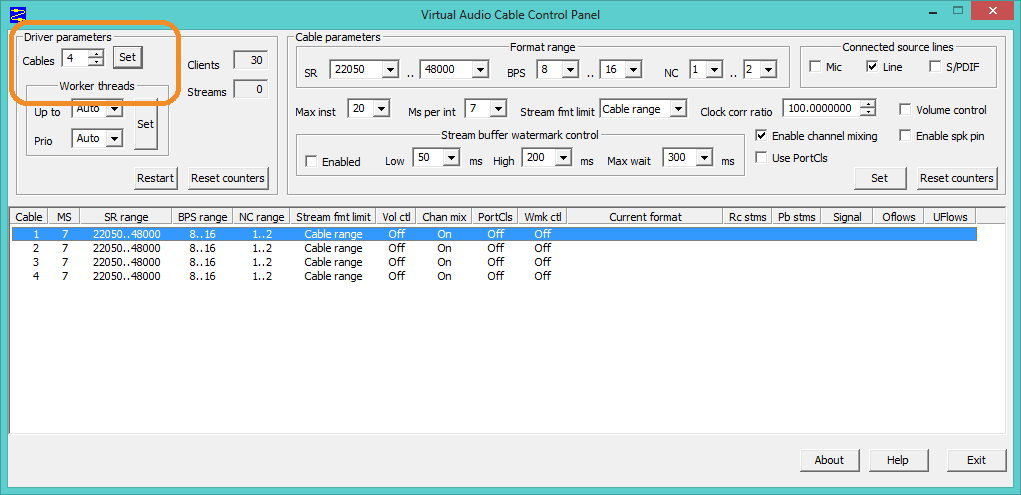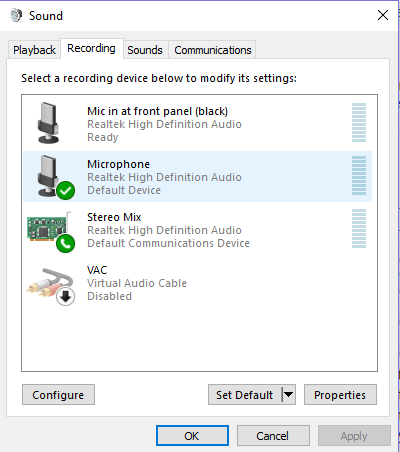
Then you can record Line 1 using any audio recording application like Audacity. For example, if you want to record a Skype call, then you can set Skype as input and virtual recording device (Line 1) as output in Audio Repeater.

Virtual Audio Cable is useful when you want to record the audio output of an application without any interference from any other application or the operating system itself. In Audio Repeater, you can also choose some options to select buffer, resync, sampling, and channels.

This will instantly start sending the audio stream from “Wave In” to “Wave Out”. In the Audio Repeater window, you can select the input device in “Wave In” and output device in “Wave Out” and then click on the “Start” button. You have to set these Line1 devices as default for them to work with Virtual Audio Cable.Īfter this is done, you can use Audio Repeater to direct the audio output of one application to another. It appears as the Line 1 in the control panel of both the Recording and Playback device properties. Virtual Audio Cable installs a virtual audio device driver in your Windows PC that can be used to both receive and send the audio streams. Just like an audio cable is used to feed the output of one device to the input of another, you can use Virtual Audio Cable to feed the audio streams of one application to another in Windows.


In most situations you may want to choose this option. Hint: At the time of installation, you will be asked whether you would like to Virtual Input to be launched automatically when you boot the system. In turn, this means that you can quickly and flexibly assign NDI sources from your network to supply video to applications like Skype™, Google + Hangouts™, GoToMeeting™, and many more. This is a very useful application that allows you to make a designated NDI source available locally as a proxy ‘webcam’. If you installed the NDI|HX driver for Windows, you were given the opportunity to install NewTek NDI Virtual Input at the same time.


 0 kommentar(er)
0 kommentar(er)
